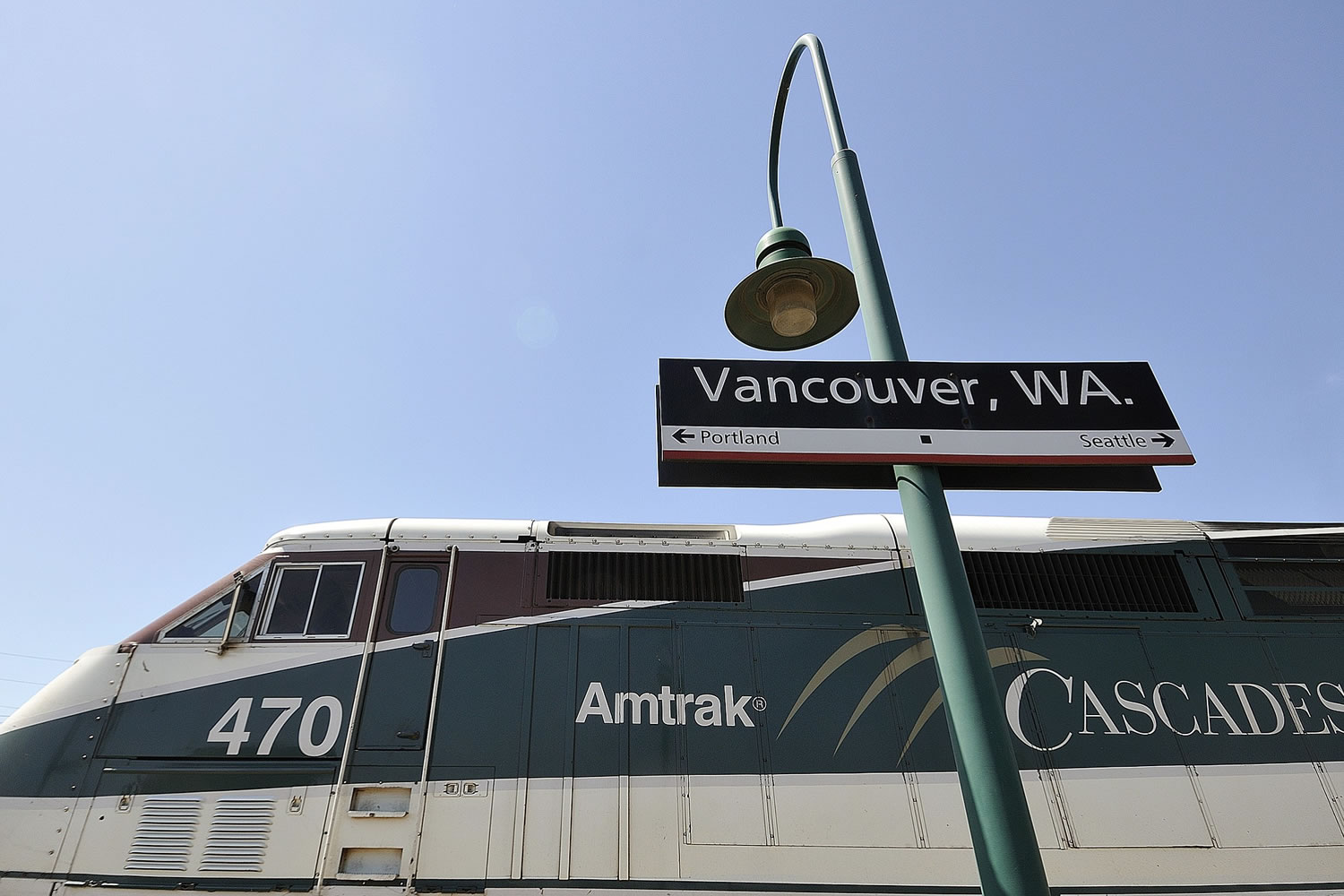Throngs of people will traverse distances large and small Wednesday ahead of the Thanksgiving holiday, but not everyone will get in their cars and hit the road.
Many people are opting for the train, according to state and federal officials, though ridership in the Northwest hasn’t grown to follow the national trend. Amtrak, the federally supported passenger rail service, carried a record 754,000 passengers systemwide during the Thanksgiving travel period last year. This year, “we anticipate it will be just about the same, if not a little more,” said Amtrak spokeswoman Vernae Graham.
Residents planning to take Amtrak out of Clark County have three options: the Cascades line, which runs between Canada and Eugene, Ore.; the Coast Starlight, between Los Angeles and Seattle; and the Empire Builder line that stretches from Chicago to Seattle and Portland. All include stops in Vancouver.
Amtrak is adding two extra trains between Seattle and Portland both Wednesday and Sunday, when many people will return home after the holiday. That’s fewer than in past years, but those trains are likely to be full, said Laura Kingman, marketing manager for the Washington State Department of Transportation’s rail division.
Running fewer trains is the result of more than just ridership, Kingman said. WSDOT took full ownership of Amtrak’s Cascades line in Washington last year, and is taking steps to save costs, she said. Ridership has gone down slightly, but that’s also due to rail construction that has prompted delays and may have made the service less attractive, Kingman said.
Still, Wednesday is expected to be the busiest day of the year for the entire Amtrak system, Graham said.
Northwest routes see a similar bump during the holiday week, Graham said. The Amtrak station in Seattle, for example, serves about 8,600 passengers in a typical week, she said. During Thanksgiving week in 2013, the number grew to more than 13,000 passengers, she said.
Data for the Portland or Vancouver stations was not available. The entire Cascades route carried more than 800,000 passengers in 2013, according to WSDOT.
The Amtrak station in Vancouver is at the west end of West 11th Street.
Highway volumes
The vast majority of people, however, will use highways and freeways to make their pre- and post-Thanksgiving trips. Drivers should expect congestion, particularly those heading north on Interstate 5, according to WSDOT. Among the stretches most prone to backups is I-5 between Olympia and Tacoma, according to the agency.
Projections released by WSDOT this month predict traffic on northbound I-5 through that area will peak in the morning, with the heaviest congestion lasting from about 6 a.m. to noon Wednesday. For those traveling south between Tacoma and Olympia, congestion will be worst from about 10 a.m. to 7 p.m., according to WSDOT.
Washington’s other peak travel routes during Thanksgiving week include stretches of Interstate 90, state Highway 2 and I-5 north of Bellingham, according to WSDOT. None of Southwest Washington’s major highways were identified as trouble spots. But many local roadways will see a significant uptick in traffic volumes. Congestion forecasts are based on data from past Thanksgiving weeks, said WSDOT spokeswoman Barbara LaBoe.
Wherever people travel by car this week, drivers should be prepared to encounter some obstacles, LaBoe said.
“The best thing we recommend is plan ahead and leave early,” she said. “You never know what kind of weather or congestion is going to hit.”





